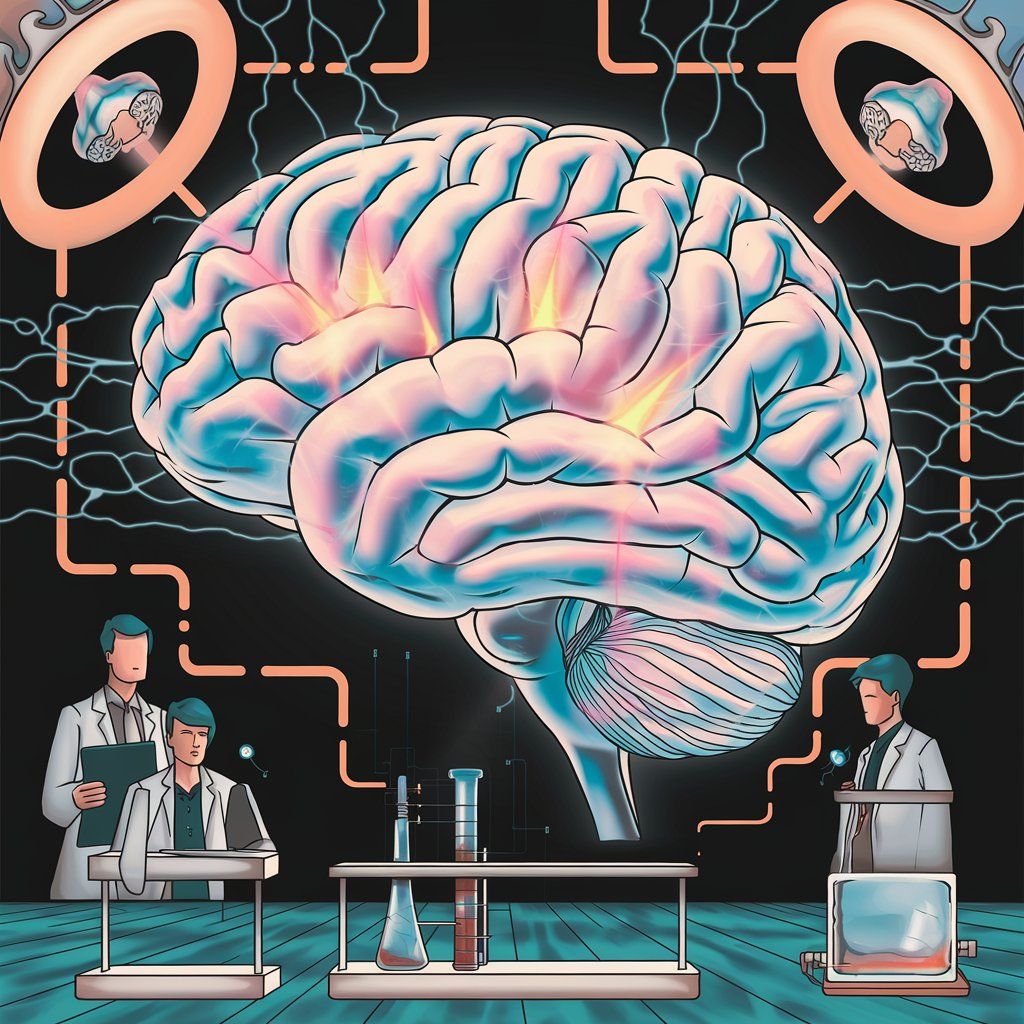
As psychiatric professionals, we're continually amazed by the brain's capacity for change. Today, we're delving deeper into how the combination of ketamine and Transcranial Magnetic Stimulation (TMS) may unlock unprecedented levels of neuroplasticity in patients with treatment-resistant depression (TRD). This synergy isn't just additive; it's potentially transformative in how we approach brain modulation and healing.
The Neuroplastic Power of Ketamine and TMS
Ketamine's action on glutamate receptors primes the brain for change, potentially making it more responsive to the targeted stimulation provided by TMS (Pradhan et al., 2015). This synergistic effect may lead to enhanced neuroplasticity, offering new hope for patients with TRD.
Ketamine's Rapid Neural Remodeling: Ketamine rapidly increases glutamate transmission and promotes synaptogenesis, creating a fertile environment for change within hours of administration (Dębowska et al., 2023; Pradhan et al., 2015).
TMS's Targeted Neuromodulation: TMS induces long-term potentiation (LTP) and depression (LTD) in specific neural circuits, effectively "rewiring" targeted brain regions over time (Dębowska et al., 2023).
Synergistic Enhancement: When combined, ketamine may prime the brain for the neuromodulatory effects of TMS, potentially leading to more robust and lasting changes in neural connectivity (Best et al., 2019; Pradhan et al., 2015).
Optimizing the Neuroplastic Window
Emerging research suggests that timing is crucial in maximizing the neuroplastic effects of combined ketamine-TMS therapy:
1. Priming Effect: Administering ketamine before TMS sessions may create a "neuroplastic window" during which the brain is more receptive to the neuromodulatory effects of TMS (Best et al., 2019; Pradhan et al., 2015).
2. Dosing Considerations: The optimal ketamine dosage for enhancing TMS efficacy may differ from standard antidepressant protocols. Some studies suggest that lower, sub-anesthetic doses may be sufficient when combined with TMS (Best et al., 2019).
3. Treatment Schedule: The frequency and spacing of combined ketamine-TMS sessions may need to be carefully calibrated to maximize neuroplastic effects while minimizing potential side effects (Dębowska et al., 2023; Pradhan et al., 2015).
Clinical Implications and Future Directions
The enhanced neuroplasticity resulting from combined ketamine-TMS therapy has significant implications for treating TRD:
❒ Accelerated Response: The rapid neuroplastic effects of ketamine, combined with the targeted modulation of TMS, may lead to faster symptom improvement compared to either treatment alone (Best et al., 2019; Pradhan et al., 2015).
❒ Improved Durability: Enhanced neuroplasticity may translate to more durable antidepressant effects, potentially reducing relapse rates in TRD patients (Dębowska et al., 2023).
❒ Personalized Protocols: As we better understand the neuroplastic mechanisms at play, we may be able to develop more personalized treatment protocols based on individual patient characteristics and biomarkers (Dębowska et al., 2023; Pradhan et al., 2015).
As we continue to explore this exciting frontier, key areas for future research include:
● Optimizing treatment parameters (e.g., ketamine dosage, TMS frequency, and timing of interventions)
● Identifying neuroimaging and electrophysiological markers of enhanced neuroplasticity
● Investigating the long-term effects of repeated ketamine-TMS treatments on brain structure and function
● Identifying neuroimaging and electrophysiological markers of enhanced neuroplasticity
● Investigating the long-term effects of repeated ketamine-TMS treatments on brain structure and function
The synergistic neuroplastic effects of ketamine and TMS offer a promising new avenue for treating TRD. By harnessing the brain's innate capacity for change, we may be able to offer new hope to patients who have not responded to traditional therapies. This enhanced neuroplasticity might lead to more robust and lasting improvements in mood and cognitive function for patients with treatment-resistant depression (Pradhan et al., 2015).
References:
Dębowska, W., et al. (2023). Transcranial magnetic stimulation and ketamine: implications for combined treatment in depression. Frontiers in Neuroscience, 17, 1267647.
Best, S. R., Pavel, D. G., & Haustrup, N. (2019). Combination therapy with transcranial magnetic stimulation and ketamine for treatment-resistant depression: A long-term retrospective review of clinical use. Heliyon, 5(8), e02187.
Pradhan, B., et al. (2015). Ketamine, Transcranial Magnetic Stimulation, and Depression Specific Yoga and Mindfulness Based Cognitive Therapy in Management of Treatment Resistant Depression: Review and Some Data on Efficacy. Depression Research and Treatment, 2015, 842817.
